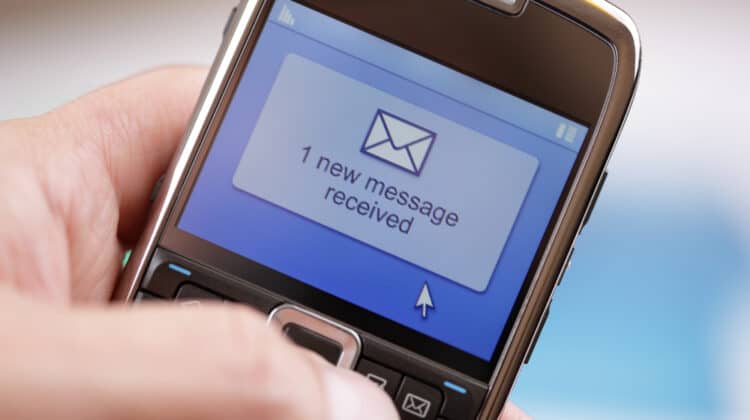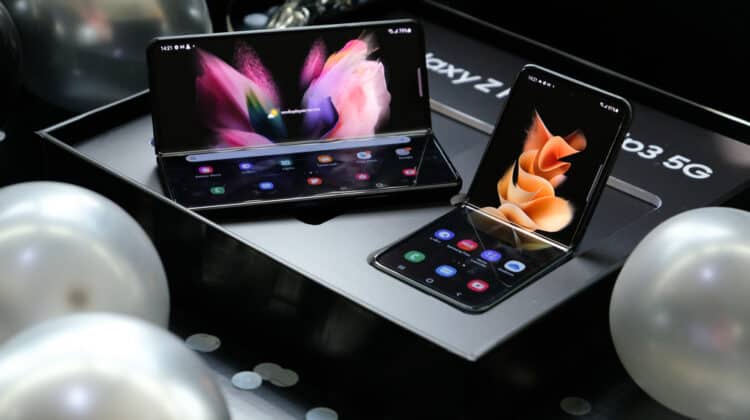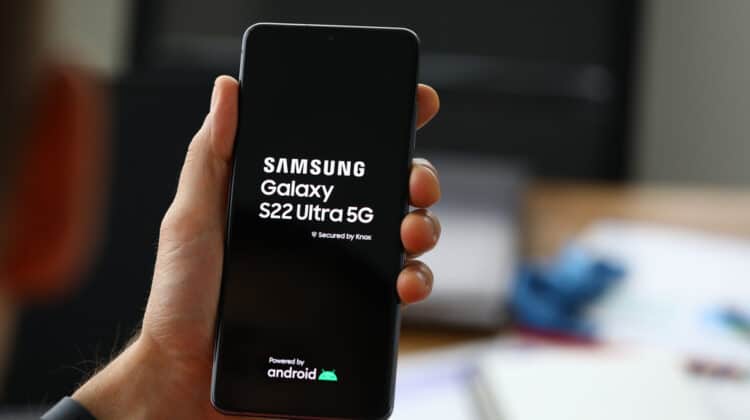
In today’s internet and technology-driven world, we all want to stay up to date with our social media accounts, emails, and text messages.
What if your phone keeps switching to 3G, and you are unable to enjoy a fast network?
We will discuss some of the significant reasons your phone switches to 3G and how to fix it.
Why Is My Phone on 3G? (Reasons, Fixes)
1. Your Phone Might Be Set On 3G

One of the potential reasons your phone keeps switching to 3G might be a reason hidden in your phone’s settings.
Most of the time, smartphones tend to switch to 3G networks because 4G networks consume more power due to high network usage and attraction.
Phones typically have network compatibility settings, and they switch to the best networks according to the current situation.
If you are in an area with a poor 4G connection or your battery is relatively low, the phone will automatically switch to a 3G connection.
This could be the reason your phone has been switching to 3G most of the time.
Fix: Change Your Phone Settings
If using 4G all the time is not an issue for you, you can change these settings in your phone.
To change your phone’s settings from 3G to 4G, follow these steps.
- Go to your phone’s settings.
- Select Network Settings.
- Select (force 4G/only 4G).
2. 4G Network May Not Be Available In Your Area

When it comes to networking, the area of usage matters quite a lot.
Smartphones have a built-in feature that allows them to automatically switch to the available network.
For this reason, your phone will automatically switch to 3G/2G or even LTE if the area has no 4G signals available.
Some network providers may have a higher reach, while others may be restricted to a smaller area.
If your phone is switching to 3G, you may be experiencing a network coverage issue.
Fix: Relocate To An Area With Better Connections Or Purchase A Signal Booster
Speak to your network provider and ask them to check the coverage in your postal area.
If they confirm that the coverage is low in your area, that could be the reason you are experiencing network issues.
This solution may be quite a stretch, but sometimes you have to take extreme measures to solve a problem.
If you are constantly experiencing 3G issues due to low network availability in your area, it may be time to move to a different postal code.
Alternatively, you can purchase an antenna capable of boosting the network, and install it outside your house.
However, if you plan to relocate to an area with a better connection, you need to do proper research about that area’s network availabilities.
You can check on your network provider’s website, ask customer support, or check for the network poles to ensure you will have network availability.
3. Your SIM Card Might Not Be 4G Compatible

Another primary reason your phone keeps switching to 3G or entirely remains on networks other than 4G might be your SIM card.
Although most network companies provide 4G services, there are still others who do not offer this service.
You need to make sure you are using the one that is compatible with 4G networks.
However, if you are using the SIM card of a company that provides 4G services, but you are still facing the issue, you need to check the status of the SIM.
This usually happens when you own a SIM purchased at the time when 4G was not entirely functional.
Or there could be a possibility that 4G networks are not enabled on your SIM.
Fix: Get A 4G Enabled Sim Card
One of the easiest ways to fix this issue is to have your SIM card 4G enabled.
You can get it done using the following two methods.
- Contact the customer support of the company.
- If your network company is still not providing 4G networks, it is time for you to switch.
If you want to keep using 4G, your SIM card should be compatible.
Whenever you buy a SIM from a network provider, always ask if they are 4G or 5G compatible.
4. Your Device Might Not Be Capable

Another primary reason your phone keeps switching to 3G could be because of your device.
If you have an old phone, it may not be compatible with 4G.
Not all smartphones offer 4G, so make sure to check your device’s compatibility.
Fix: Have A 4G Compatible Device
It is highly recommended to check the phone’s features before purchasing it.
If you have one of the older models, you could consider switching to the latest model.
Some companies offer trade-ins where you can trade your existing model with a new model and pay the difference in price.
5. Your Phone May Need A Reboot

These days, no one likes to reboot their phones unless there is a new update required.
Sometimes rebooting is essential to let your phone get back to the normal functioning mode.
Fix: Reboot Your Phone
The easiest solution to this problem is to reboot your phone.
Also, it is highly recommended to reboot your phone once a week, even if you are not facing any connectivity issues.
6. Your Phone Might Have Issues

Hardware issues can also contribute to connectivity issues.
If you recently dropped your phone or it suffered some kind of damage, that could affect your phone’s functionality.
Dust in the phone’s internal antenna can also be another reason.
Fix: Get It Repaired
Pay a visit to a technician to get your phone fixed.
Tell them about the problem you are facing and that you have already checked for other problems.
The technician will thoroughly examine the phone and get the hardware fixed.
7. Outdated Software

Most smartphones automatically perform regular updates to ensure that their devices meet the criteria for using the latest technologies.
As users, we don’t pay attention to these updates most of the time, mainly because software updates can be time-consuming.
Fix: Update The Software
You can get the issue fixed by simply updating your phone’s software.
If you cannot find available updates, follow these steps.
- Go to the phone’s main settings.
- Click on updates.
- Select update phone software.
The steps mentioned above remain the same for most mobiles in the market.
However, if your phone does not provide similar settings, you can always use the search feature available in the settings menu.
8. External SIM Card Issue

If your SIM card is not properly positioned or is dirty, it can also cause connectivity issues.
If you recently dropped your phone or your phone was exposed to a lot of dust, it could potentially be affecting your network connection.
Fix: Clean Your SIM Card
To fix this issue, you need to eject, clean, and re-insert your SIM card.
You can use a clean cloth or tissue to clean it properly.
It is highly recommended to blow into the SIM card jack of your phone with some light air from your mouth or a blow dryer.
How To Check If Your Phone Is 4G Enabled Or Not

The best way to check whether your phone is 4G enabled or not is by checking the network settings.
You can also visit sites like GSMArena.com or install applications like Inware or Device Info HW to check your phone’s features.
However, the best time to check the phone’s 4G feature is at the time of the purchase.
You need to go through the user manual at the time of the purchase to check whether it will provide a 4G network or not because this feature can’t be changed in the future.
How To Know If Your SIM Is 4G Or Not

The simplest way to check whether the SIM is 3G or 4G is by checking the network settings.
A range of networks will be available to choose from, and the phone is 4G enabled if it has a 4G network available in the settings.
You can also check 4G network availability by contacting the customer support department of the provider company.
How To Check 4G Coverage In Any Area?

Your current location plays an important part in 4G availability.
Here are three different ways to check whether 4G is available in your area or not.
1. By Using Coverage Maps
One of the best ways to find whether an area has 4G coverage or not is by checking the coverage maps.
You can check out coverage maps available on your network service provider’s website or by giving them a visit.
2. Check Settings
Another way of finding 4G availability in your area is by checking the network settings.
Go to network settings in your phone and click on the available networks.
The smartphone will list down all the networks available in that particular area.
3. Check Through Applications
Applications are one of the easiest ways to check available networks in any particular area.
You can download applications like Data Flow and IP Tools to find out the network availability.
Is 4G Better Than 3G?

The 4G network is better than 3G because of its latest features, speed, and modern technology.
It became functional in 2010 and, on average, offers a speed 500 times faster than 3G.
Almost all mobile carriers have recently decided to phase out 3G devices.
They have forced the users to upgrade their existing devices to 4G compatible devices, so 4G is far better than 3G.
With its lightning-fast speed, data transfer rates, and mobile signals, 4G also allows you to access broadband on your devices, which is another great advantage.
The table compares some features of both 3G and 4G networks.
| Network | 3G | 4G |
| Band Frequency | 1.8–2.4 GHz | 2–12 GHz |
| Maximum Downloading Rate | 100 Mbps | 1 Gbps |
| Maximum Uploading Rate | 5 Mbps | 500 Mbps |
| Used Service | CDMA 2000, EDGE etc. | WiMAX & LTE-advanced |
| Data Transfer | Up to 3.1 Mbps | Up to 12 Mbps |
Is 3G Network Shutting Down?

Yes, almost all major and minor telecommunications carriers are phasing out the 3G networks.
The breakdown started in January 2022, and it is expected that the 3G networks will be completely obsolete by the end of this year.
According to the Federal Communications Commission in the US, all users with older model phones that do not have 4G or 5G compatibility need to upgrade their phone to keep using their data services.
The 3G technology was initially employed two decades ago to deliver cellphone signals, and 3G phones quickly gained popularity around the globe.
Today, however, with many phones utilizing 4G networks and the latest ones using 5G, the 3G technology is slowly becoming outdated.
For users using older smartphones, updating to 4G or 5G compatible devices is the only option if they want to continue receiving calls and messages or continue using mobile data.
4 Tips To Avoid Any Loss

It is always a good idea to be aware of the technological advancements these days to tackle the situation effectively.
If you weren’t aware of these changes, don’t worry.
It is never too late to get on board.
Here are some tips that can help.
1. Consult Your Phone Company
One of the first things you need to do is talk to your phone company and ask about its 3G retirement policy.
Most companies will either give you a replacement for your existing device or compensate you in any other way.
2. Sell Your Device
If your device is on the list of phased-out 3G devices, selling is another option that you can consider.
Although selling will get you peanuts in return, it is still better than a complete loss of value.
3. Check Compatibility Of Other Smart Devices As Well
The 3G networks phase-out is not restricted to mobile phones.
All gadgets that use the internet to function will be of no use as well.
This can include different smart devices like CCTVs, medical devices, smartwatches, computers, and other similar devices that use 3G and may be affected by the 3G retirement.
4. Reuse It
Reusing your device effectively is an excellent way of saving some money.
When it comes to smartphones, an internet connection is the single most crucial aspect that makes these phones smart.
You can use your smartphones as a small TV, portable radio, gaming machine, alarm clock, or even a Kindle to read books or take notes.
You won’t have to spend on an additional gadget, and as a result, you will be saving yourself some money.
Why Are 3G Networks Being Phased Out?

Mobile carriers decided to phase out 3G mainly because of technological restrictions.
As time passes, these companies try to improve the performance of different devices by introducing the latest technologies.
For this purpose, 3G was one of the networks that became extremely outdated and had to be phased out.
However, phasing out outdated technologies is not a new thing.
Several technologies that gained massive fame in the modern world had to be phased out at some point in time, and 3G is simply the next one on the list.
Especially in the telecommunications industry, several similar cases have happened before.
For example, when several mobile carriers updated their networks to offer 4G services, they shut down existing 2G networks.
When Will 3G Network Completely Phase Out?

The phase-out began at the start of 2022, and it is expected to be completed by the end of this year.
However, different companies have provided different dates for completing the 3G close-out.
- AT&T: The shutdown of 3G networks will be finished by Feb 2022.
- T-Mobile: Plans to complete the shutdown of T-Mobile’s 3G network by July 1, 2022, Sprint’s 3G Network by March 31, 2022, and Sprint’s 4G LTE by June 30, 2022.
- Verizon: The deactivation of 3G networks will be completed by December 2022.
It would be a good idea to upgrade to 4G or 5G compatible devices before the mentioned dates to avoid any potential loss of service.
Conclusion
If your phone keeps switching to 3G, troubleshoot it as soon as possible.
If you find the phone to be incompatible with networks other than 3G, you should consider replacing it.
However, if the issue is for any other reason, you can resolve it by applying the above-mentioned fixes.
NEXT: Why Is My Wallpaper Blurry (Android)? (8 Causes, Fixes)












